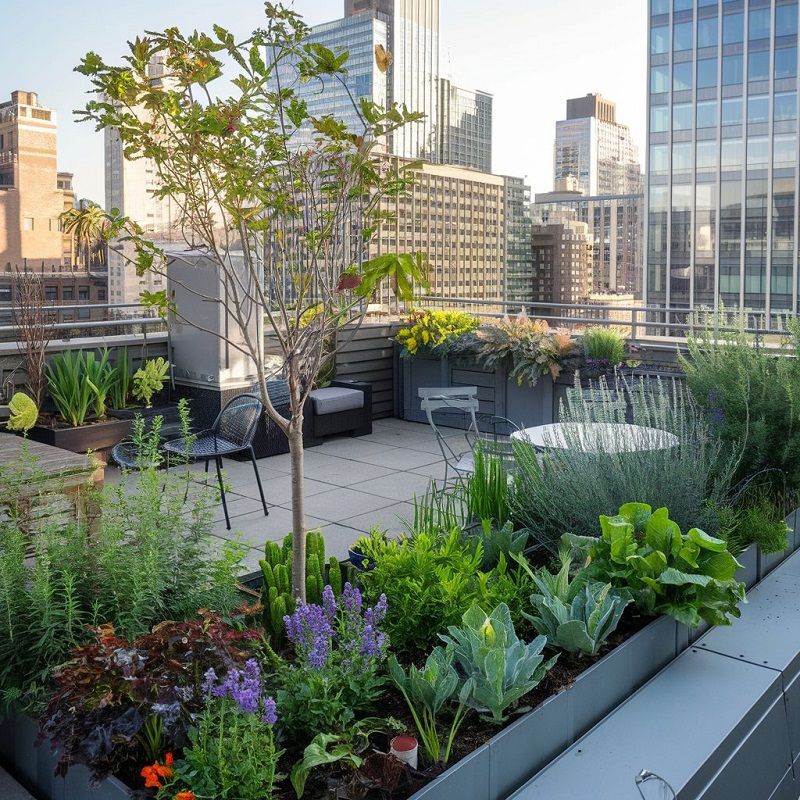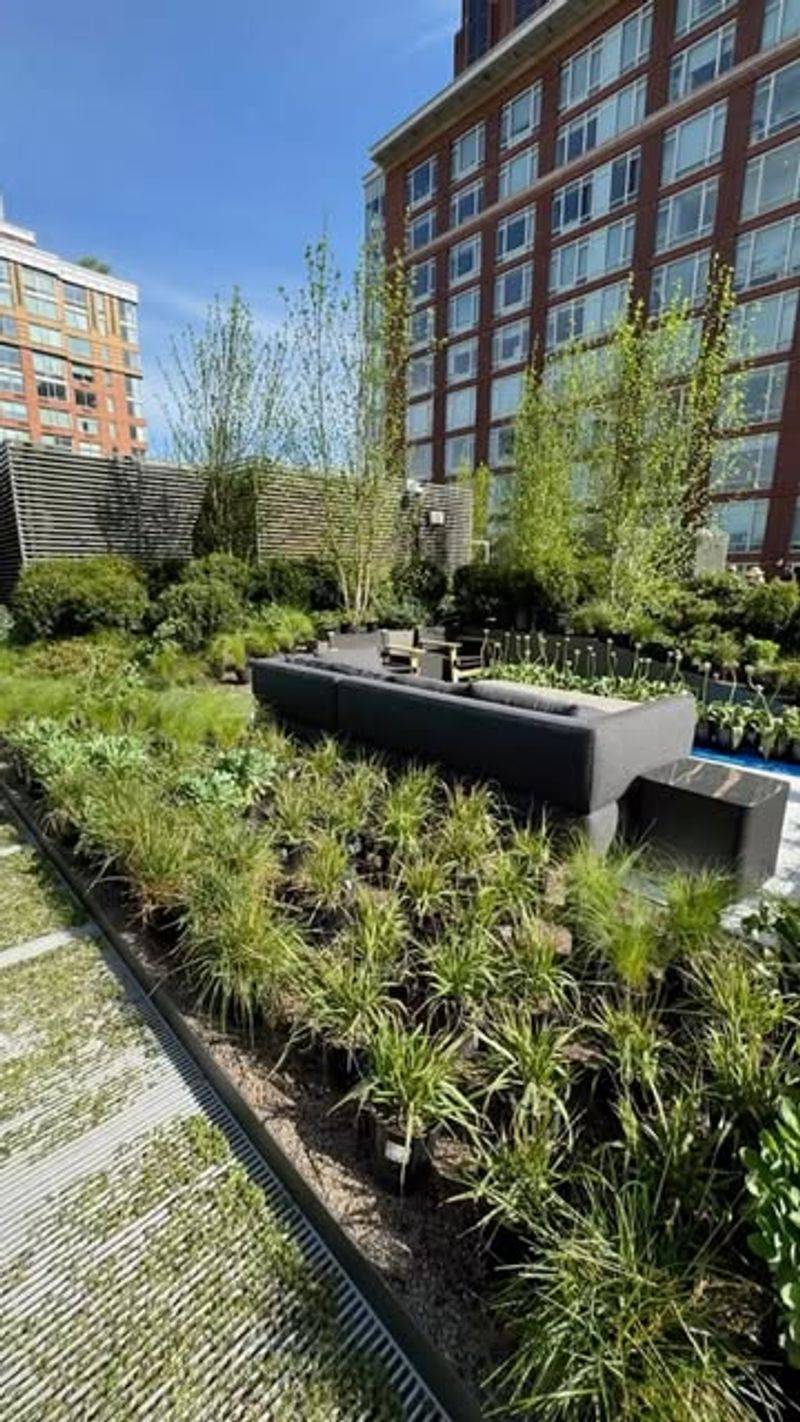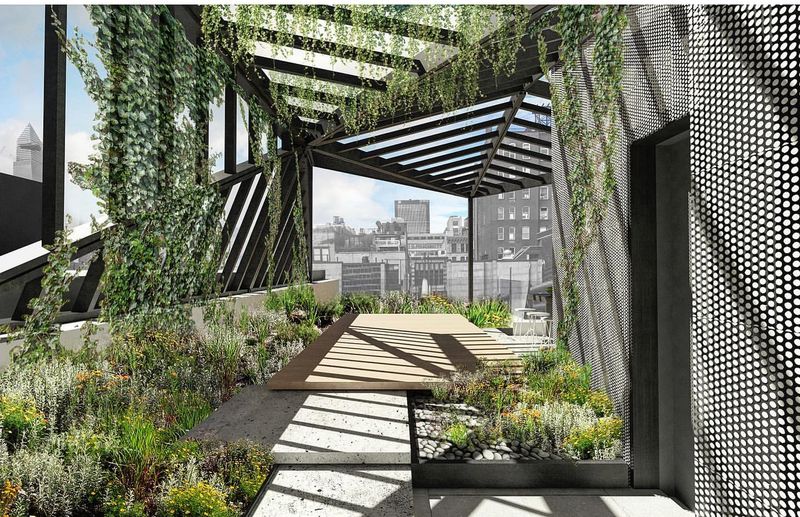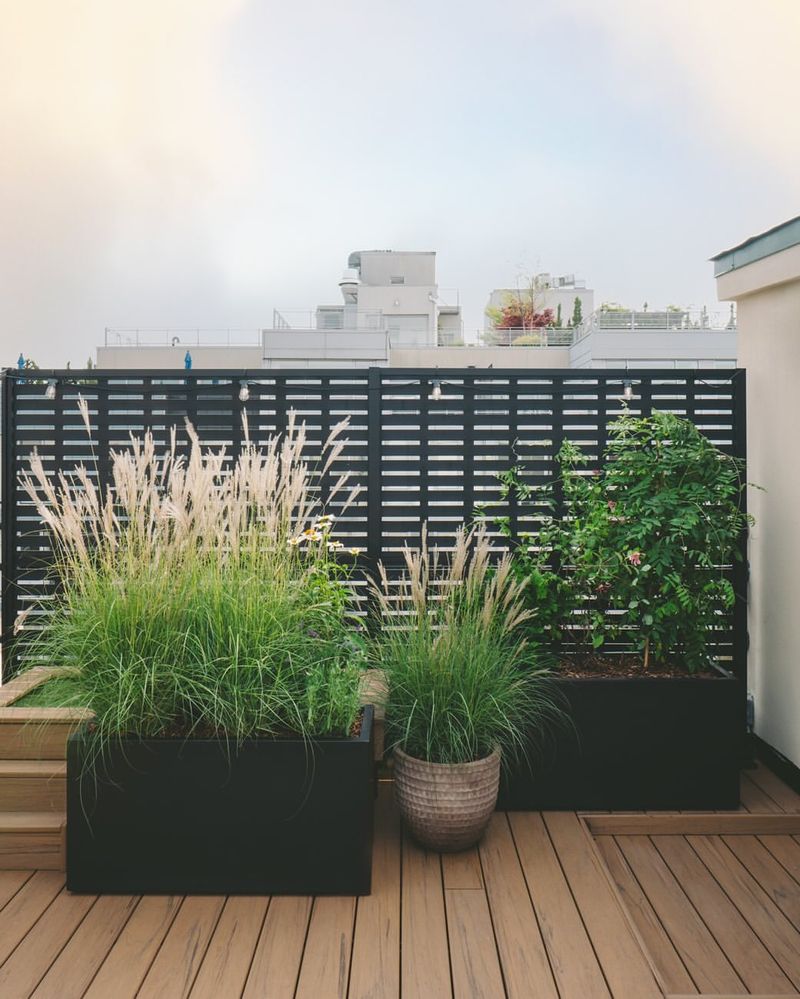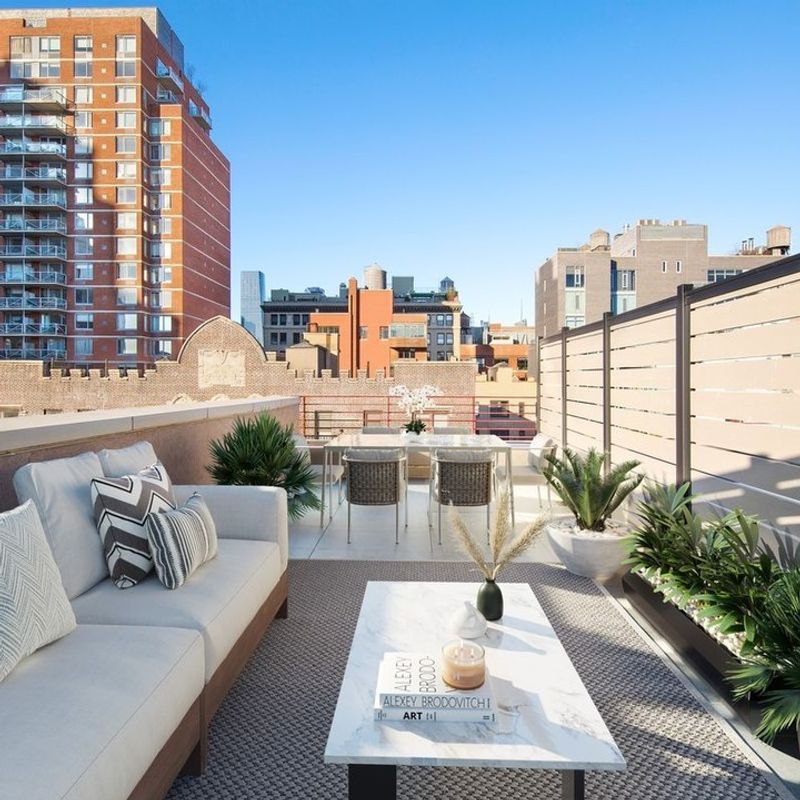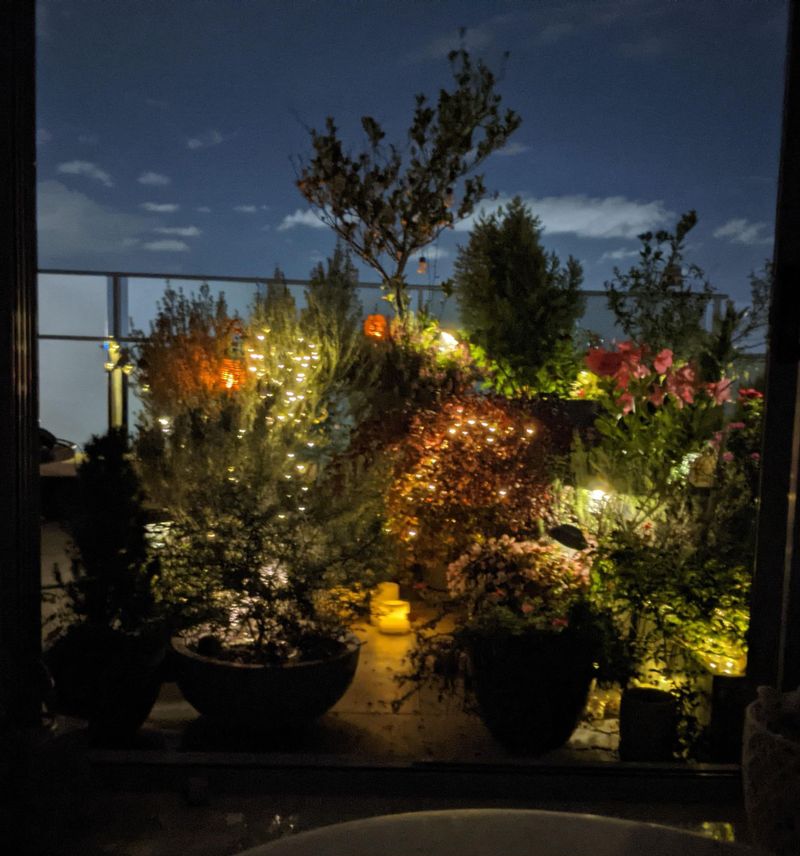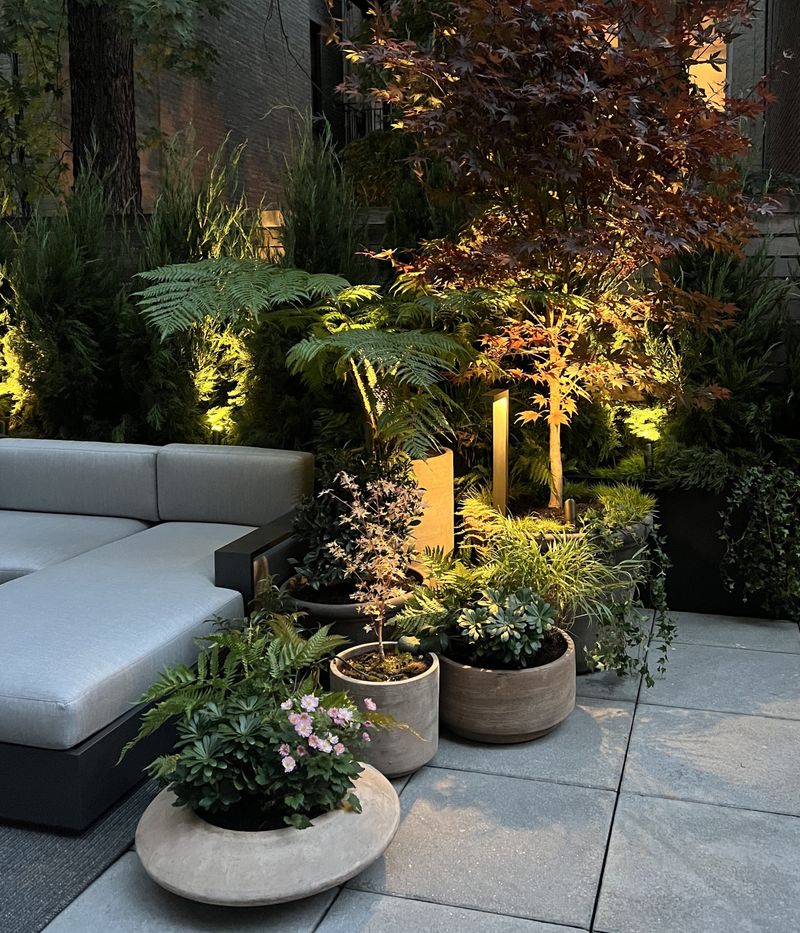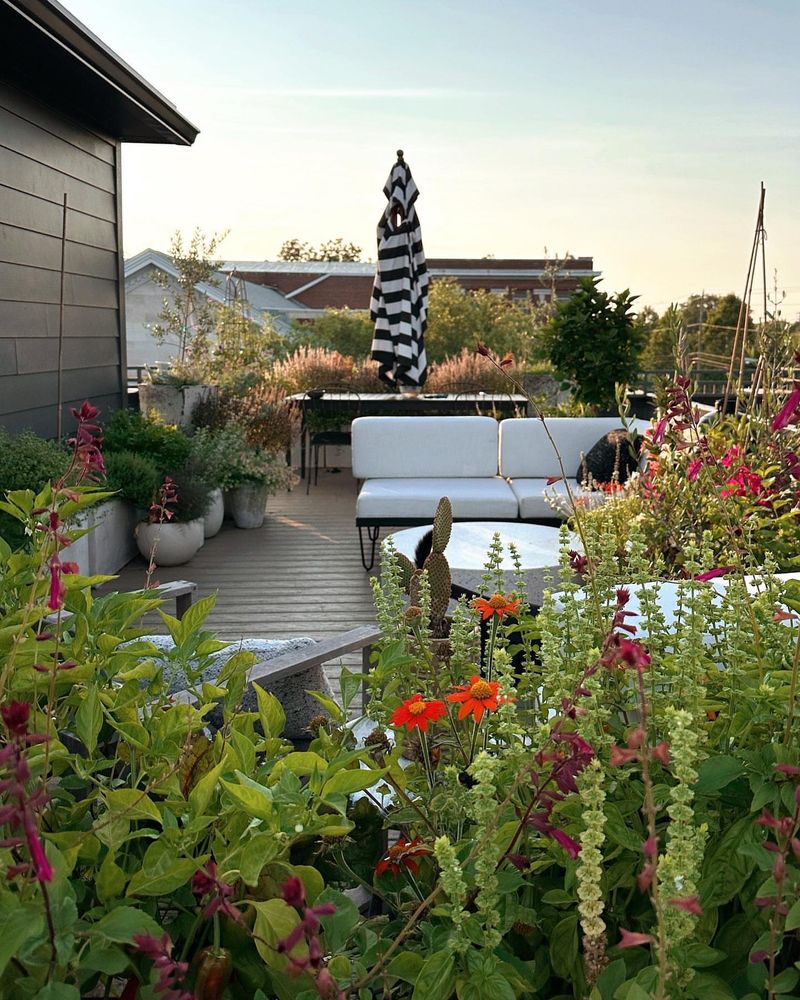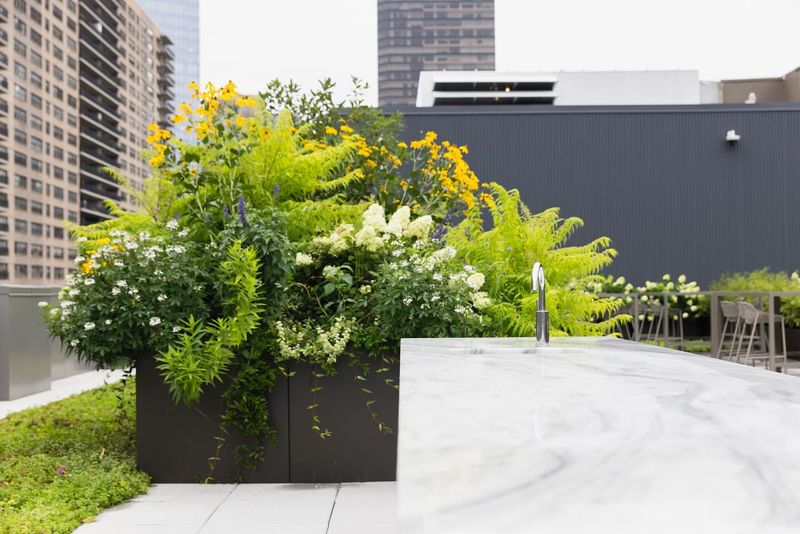Starting a rooftop garden in New York feels like claiming a little piece of nature above the chaos. With ground-level green space so limited, more city dwellers are heading upward to grow. These 16 steps can turn any bare rooftop into a lush, living retreat.
For me, the magic came when butterflies danced around my flowers with the Empire State Building in the background. That blend of nature and skyline is pure New York. And serving rooftop-grown tomatoes in a salad 20 stories up? Unbeatable.
Rooftop gardening here has its quirks—wind tunnels, weight limits, and building codes. But with smart planning and these tips, it’s totally doable. The payoff? Morning coffee surrounded by greenery and a skyline that never gets old.
1. Check Building Regulations
Before buying a single plant, contact your building management or co-op board. Many NYC buildings have specific rules about rooftop modifications. You’ll need written permission and possibly architectural approval.
The Department of Buildings may require permits depending on the scale of your project. Weight limits are particularly important – most residential roofs weren’t designed for heavy soil loads. Fire codes also regulate access paths and materials.
Keep documentation of all approvals in case questions arise later. This groundwork isn’t the fun part, but skipping it could mean dismantling your garden later.
2. Consult Structural Engineers
Hiring a structural engineer might seem excessive, but it’s essential for rooftop gardens. They’ll calculate exactly how much weight your roof can safely hold, which determines soil depth and container sizes you can use.
Engineers can identify the strongest areas of your roof for placing heavier elements like water features or large planters. They’ll also recommend proper waterproofing methods to protect your building’s structure.
Their report provides crucial documentation that satisfies building management concerns. The few hundred dollars spent on this consultation prevents potentially thousands in structural damage.
3. Design Your Layout
Sketch your garden vision considering sun patterns, wind exposure, and access points. New York rooftops often have equipment like HVAC units that you’ll need to work around, so measure your usable space carefully.
Create designated areas for different activities – perhaps a seating zone, growing beds, and a small storage area. Account for pathways between planting areas that allow easy maintenance access.
Consider views both within your garden and of the surrounding cityscape. Position taller plants strategically to block unsightly views while framing beautiful ones like the Brooklyn Bridge or Central Park.
4. Install Proper Drainage
Drainage is non-negotiable for rooftop gardens. Without it, water pools damage roofing materials and potentially leak into apartments below. Start with a protective membrane rated for garden use, followed by a drainage layer of gravel or specialized drainage mats.
Ensure planters have adequate drainage holes and are slightly elevated using pot feet or small platforms. This prevents water from becoming trapped underneath containers.
Incorporate a simple irrigation system with drains that connect to existing roof drainage. During heavy New York thunderstorms, proper drainage prevents soil erosion and plant damage.
5. Choose Lightweight Containers
Traditional ceramic pots are too heavy for most rooftops. Instead, opt for fiberglass, high-grade plastic, or composite planters that mimic stone or terra cotta. These lightweight alternatives reduce structural load while still looking attractive.
Fabric grow bags are excellent options that are ultralight, affordable, and surprisingly durable in rooftop conditions. They also provide excellent aeration for plant roots and can be folded away during winter.
Whatever containers you choose, ensure they’re secured against New York’s notorious wind gusts. Heavier plants like small trees should be in wider, more stable containers to prevent tipping.
6. Select Specialized Soil Mix
Regular garden soil is far too heavy for rooftop use. Create a custom lightweight mix using primarily peat moss, perlite, and vermiculite. This combination retains moisture while weighing significantly less than standard potting soil.
Add composted pine bark for structure and coir fiber (coconut husk) for water retention. These organic components break down slowly, meaning you won’t need to replace soil as frequently.
Specialized rooftop soil mixes are available at garden centers in NYC, often labeled as “green roof” or “roof garden” soil. These professional blends are worth the investment as they’re formulated specifically for the challenging conditions plants face above the city.
7. Install Wind Barriers
New York rooftops can experience wind speeds significantly higher than street level, especially on taller buildings. Strategic windbreaks protect both plants and people from uncomfortable gusts that can damage foliage and topple containers.
Glass panels offer wind protection while maintaining views, while lattice screens create partial barriers that filter rather than block wind completely. Taller, wind-resistant plants like ornamental grasses can form natural windbreaks around more delicate specimens.
Anchor all barriers securely without penetrating the roof membrane. Weighted bases or ballasted systems work well for temporary or seasonal solutions that won’t damage your roofing.
8. Choose Climate-Appropriate Plants
New York’s rooftops experience more extreme temperatures than ground level – hotter in summer and colder in winter. Select plants rated for USDA zones 6-7, but that can tolerate temperature fluctuations and exposure.
Native prairie plants like coneflowers, black-eyed Susans, and little bluestem grass thrive in rooftop conditions. Mediterranean herbs like rosemary, thyme, and lavender excel with minimal water once established.
Avoid plants with large sail-like leaves that catch wind and those requiring consistent moisture. Succulents, sedums, and drought-tolerant perennials make excellent low-maintenance choices that can handle the harsh rooftop environment.
9. Set Up Irrigation Systems
Manual watering on rooftops quickly becomes tedious with multiple trips carrying heavy watering cans. Install a simple drip irrigation system with programmable timers to deliver precise amounts of water directly to plant roots.
Soaker hoses work well for row plantings, while individual drip emitters are perfect for container gardens. Connect everything to a manifold with a timer that can be adjusted seasonally as water needs change.
Consider rainwater harvesting using simple barrels if your building allows it. This sustainable approach reduces water bills and provides chemical-free water that plants prefer over treated city water.
10. Create Shade Areas
New York rooftops receive intense, unfiltered sunlight that can scorch even sun-loving plants. Incorporate adjustable shade solutions like retractable awnings, shade sails, or pergolas with removable canvas covers to protect sensitive plants during peak afternoon heat.
Umbrellas provide portable shade that can be moved as the sun tracks across the sky. For a more natural approach, plant fast-growing vines like morning glory on trellises to create living shade screens.
Remember that humans need shade too! Design your garden with comfortable shaded seating areas where you can enjoy your green space even on the hottest summer days.
11. Add Privacy Elements
Neighboring buildings often overlook New York rooftops, making privacy an important consideration. Tall ornamental grasses like miscanthus or bamboo in containers create natural screens without blocking light or views completely.
Trellises covered with climbing plants offer seasonal privacy that grows more dense through summer months. Movable elements like decorative folding screens allow you to adjust privacy levels as needed for different activities.
Strategic placement of larger shrubs creates secluded nooks within your garden. This layered approach to privacy feels more natural than a single uniform barrier and adds depth to your rooftop landscape.
12. Install Weather-Resistant Furniture
Rooftop furniture faces harsh conditions – intense sun, driving rain, and winter snow. Invest in commercial-grade outdoor pieces designed specifically for extreme environments. Marine-grade stainless steel, aluminum, and certain dense hardwoods like teak hold up remarkably well.
Lightweight, stackable options allow flexible arrangement and easy storage during severe weather. Avoid inexpensive plastic that becomes brittle in NYC’s temperature fluctuations. Consider furniture with built-in weight or secure anchoring options.
Storage benches and tables with hidden compartments serve dual purposes – seating plus protected space for garden tools, cushions, and accessories. This maximizes your limited rooftop square footage.
13. Incorporate Lighting Solutions
Extend your rooftop garden enjoyment into evening hours with strategic lighting. Solar-powered options eliminate the need for complex electrical work and are particularly well-suited to sunny New York rooftops.
String lights create an enchanting ambiance when woven through pergolas or along railings. Path lights ensure safe navigation after dark, while uplighting key plants or architectural elements adds drama.
Battery-operated LED candles and lanterns provide portable illumination for dining areas. For year-round gardens, consider installing a few low-voltage fixtures connected to timers that automatically create your evening garden atmosphere.
14. Plan For Seasonal Changes
New York experiences distinct seasons, requiring adaptable garden strategies. Use large containers for seasonal rotations – spring bulbs followed by summer annuals, then fall chrysanthemums. This keeps your garden vibrant year-round.
Install hooks or brackets for protective covers that shield sensitive perennials during winter months. Consider retractable awnings that provide summer shade but can be removed before winter snow loads.
Incorporate evergreen structural plants as anchors that maintain visual interest through winter. Small conifers, boxwoods, and certain ornamental grasses retain their form even when dormant, preventing your rooftop from looking completely barren during colder months.
15. Create Wildlife Habitat
Even several stories up, your rooftop can become a wildlife haven. Install shallow water features with pebble “beaches” that allow bees and butterflies to drink safely. Bird feeders and nesting boxes attract feathered visitors, though be mindful of mess from certain seed types.
Plant native flowering species that support New York’s pollinators. Milkweed for monarch butterflies, echinacea for bees, and native berry bushes for birds create functioning ecosystem connections.
Insect hotels provide habitat for beneficial bugs that help control garden pests naturally. These simple structures add interesting visual elements while supporting biodiversity in the concrete jungle.
16. Maintain Regular Care Schedule
Rooftop gardens require vigilant maintenance due to their exposed conditions. Set calendar reminders for weekly checks of irrigation systems, especially during hot New York summers when containers dry out rapidly.
Monthly inspection of drainage systems prevents clogs from fallen leaves or debris. Seasonal fertilization schedules should be lighter than ground gardens – container plants need nutrients but over-fertilizing leads to excessive growth that’s vulnerable to wind damage.
Establish a routine for checking plant ties and supports after stormy weather. The elevated position of rooftop gardens makes them particularly susceptible to damage from New York’s occasional severe weather events.



